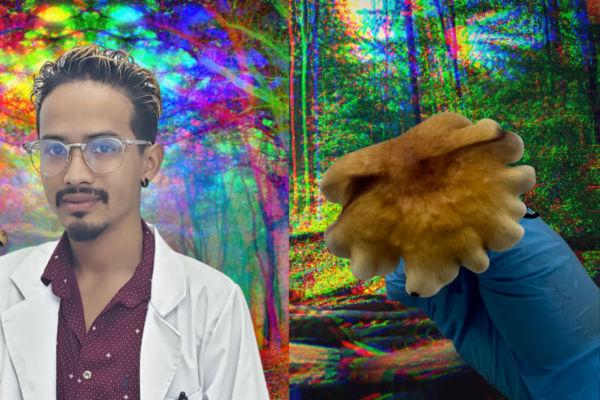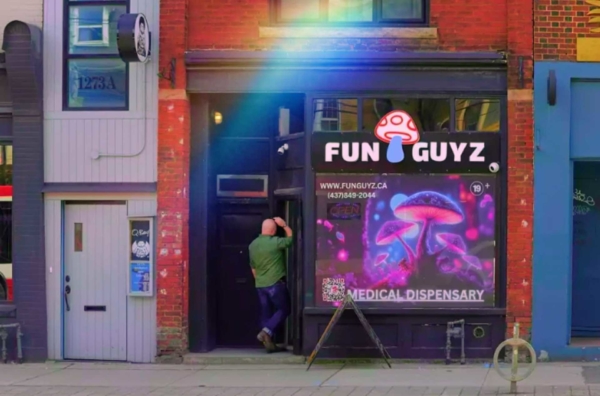
In recent years, the mental health and cognitive benefits of psilocybin have become increasingly evident. The new psychedelic revolution has put psilocybin mushrooms at the forefront of conversations regarding new, more effective treatments for depression, addiction, and many other mental issues.
High doses can induce significant mind-altering experiences, which may be overwhelming for unprepared individuals. Microdosing–the practice of consuming minute doses of psilocybin on a set schedule–is a safer alternative that can make daily life more pleasurable and bring about positive changes to one’s well-being, productivity, and creativity.
Meditation, the practice of focusing or clearing your mind through mental and physical techniques, is a perfect complement to a microdosing regimen, as it can help you organize your thoughts and integrate the insights you get from psychedelic experiences into your day-to-day life.
Before we delve into the various meditation techniques you can try, let’s review the most popular microdosing protocols to find the one that suits your needs.
Read also: Microdosing 101: A Beginner’s Guide to 6 Effective Microdosing Protocols
1. Fadiman protocol
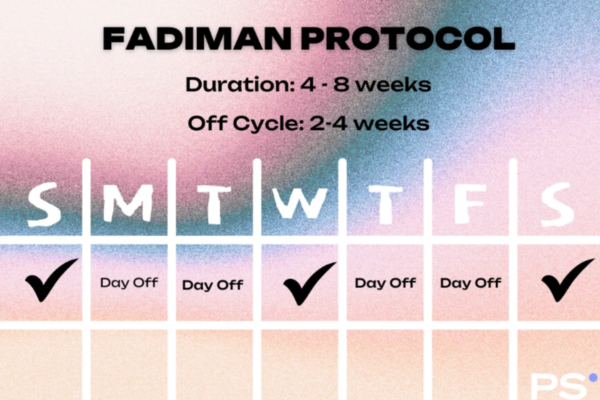
The Fadiman protocol consists of consuming mushrooms one day and then taking two days off. During these “off days,” you’ll feel the afterglow that follows a psychedelic experience and give your body enough time to stop your tolerance from building.
The afterglow typically wears off on the third day, and you’re back to feeling like you did before dosing. Over a month, this contrast becomes more subtle thanks to how psychedelics “reorganize” your mind and body.
You should adjust your dosage over time or modify the frequency if psilocybin’s effects are too potent. Once you recognize how long your afterglow is, you may want to avoid the afterglow-less days if you’re struggling without the aid of psychedelics.
2. Fixed schedule
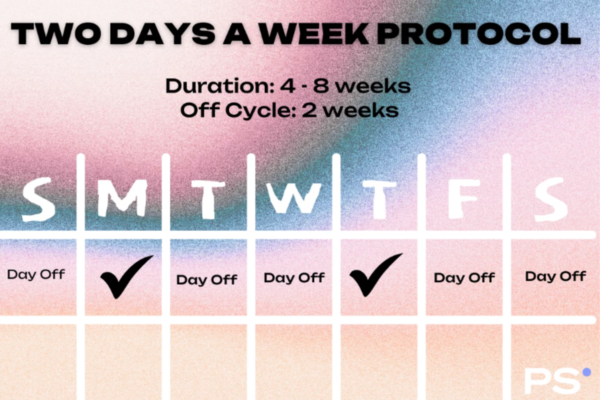
If you prefer a more rigid protocol, use the fixed schedule regime, in which you can choose on which days of the week you’ll microdose psychedelics and on which you will rest.
No matter which days you choose, remember to keep at least one day in between doses to avoid building a tolerance.
3. Every other day
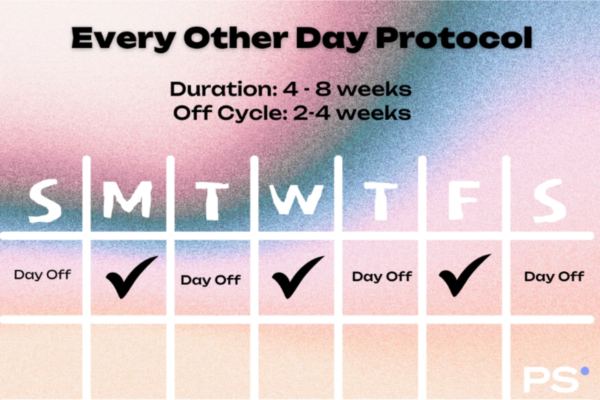
This regimen is similar to the Fadiman protocol. However, it forgoes the “observation day,” when the afterglow wears off, and you get to observe the benefits of the microdose.
It’s the easiest to remember and allows for more flexibility, as there may be times when the afterglow lasts more than one day.
4. Stamets stack
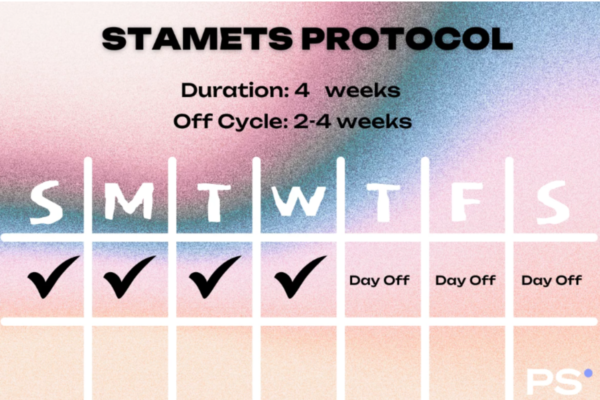
This protocol was invented by Paul Stamets, a mycologist who experimented with adding more than one type of mushroom into your daily microdose.
He proposed adding lion’s mane mushrooms, a small dose of niacin, and psilocybin to enhance its capacity to create new neurons and neural pathways and repair neurological damage.
Its schedule is pretty simple, requiring you to take a mixture of these three substances for four days of the week and then rest for the remaining three.
Read also: How to Microdose Psilocybin According to Paul Stamets: The Stamets Stack
5. Nighttime

Regardless of the protocol that you’re following, microdosing at night could be a sound choice if psilocybin makes you tired. This way, you’d use this effect to your advantage to get a good night’s sleep.
Keep in mind that this protocol only applies to psilocybin. LSD will keep you awake in doses, big or small, due to its interaction with your serotonin receptors.
Read also: Microdosing 101: LSD Microdosing Protocols and Proper Microdosing Techniques
6. Intuitive

The intuitive protocol is the most flexible microdosing regime, but it requires some experience with microdoses to understand the exact moment their benefits wear off completely.
By recognizing this pattern, you can economize on mushrooms by taking them only when necessary. However, you must remember to leave at least one day in between doses to avoid building up tolerance.
Here are 7 meditations you can try today to complement your microdosing regimen:
1. Mindfulness meditation

Mindfulness meditation has gained popularity recently due to its proven benefits in reducing stress. This technique requires you to find a comfortable, undisturbed location to tune into your present thoughts and feelings while breathing deeply. Once you can focus on these stimuli, you must consciously observe them without reacting, letting them pass instead. This meditation technique is sometimes used during integration therapy, allowing the patients to observe the insights they gained from a psychedelic experience from a place of acceptance instead of judgment, which can help them better understand themselves.
Listen to Guided Mindfulness Meditation for a Powerful Mind – Strength and Healing Energy
2. Vipassana meditation

Vipassana means “to see things as they really are.” This ancient technique can improve concentration and self-awareness through meditation, and its practice consists of paying attention to the physical sensations that interact with and condition the mind.
Practicing Vipassana meditation can help you stop ruminating over past decisions and reduce anxieties and expectations about the future, achieving calmness by remaining in the here and now.
Vipassana is taught during a 10-day course, requiring students to abstain from several things, including intoxicants and sexual activity. This makes it incompatible with an ongoing microdosing regimen, but you could take the course before beginning your psychedelic journey.
Practicing Vipassana meditation on your off days may help you work through any realizations you may have had under the effects of psychedelics and improve your overall mood once the afterglow goes away.
Listen to 20-Minute Guided Vipassana Meditation for Beginners: Discover Inner Peace and Mindfulness
3. Guided meditation

Guided meditation is practiced with a teacher who leads you through the meditation, whether in person or via audio or video. They will help you connect with your mind, teach you the necessary techniques, and advise you on integrating the calmness and insights you gain from the practice into everyday life.
Since a tutor is in charge of the practice, this type of meditation may be easier than other practices during a psychedelic experience. It allows you to focus only on the instructions, and you may be able to easily reach into your consciousness even if you’re inexperienced in meditative practices.
Listen to a Powerful 20 Minute Guided Meditation
4. Metta meditation

Metta meditation focuses on reciting words and phrases that evoke love and compassion for oneself and other beings. After sitting comfortably and taking deep, slow breaths for a few minutes, you begin by repeating words of affirmation toward yourself.
Afterward, you do the same with a friend or family member who cares for you and progress by including animals, neighbors, or more distant acquaintances. You should also include people with whom you have a strained relationship or problems.
The intense feelings of self-compassion and connectedness that psychedelics bring about will undoubtedly make this practice more worthwhile and may help you work through complex issues without confrontation.
Listen to Loving Kindness Meditation or Metta Meditation / Mindfulness Meditation / Mindful Movement
5. Yoga meditation

The ancient practice of yoga encompasses numerous styles, all requiring concentration and connectedness with one’s body. This discipline involves performing sequences of movements that require conscious breathing to reach a meditative state.
Your yoga session will be more successful the more you can stay in the moment, focusing only on your breathing and movements to improve your flexibility.
The practice usually ends with a short guided meditation from your tutor, which makes it an ideal blend of physical exercise and self-examination.
A consistent microdosing regime helps you connect more deeply with the practice and sink into meditation more easily.
Here’ a 30 Min Slow Flow Yoga Meditation
6. Chakra meditation

“Chakra” is the Sanskrit word for wheel. In Vedic religion, the chakras are seven energy centers that go from the bottom of the spine to the top of the head. While they aren’t tangible, they are said to connect our spiritual body to our material one.
Chakra meditation is a practice that focuses on aligning these seven chakras and restoring their energy. While the techniques are similar to other types of meditation, they also require you to visualize your chakras, and it may be best to do so with the help of a teacher who is well-versed in the Vedic religion.
Since psychedelics can produce mystical experiences in their users, they may find it easier to connect with this belief system and have successful experiences realigning their chakras.
Here’s a 15 Min Chakra Balance Guided Meditation
Safety precautions
Magic mushrooms are safe to use and safer than most psychedelics, so introducing them into your routine has a low potential for side effects. They are neither addictive nor toxic, and low doses further reduce the chances of side effects occurring. Some of the potential side effects are:
Fatigue
Nausea
Headache
Anxiety
Tinnitus
We must clarify that mushrooms aren’t safe for everybody, and people allergic to fungi with a history of psychiatric conditions, heart problems, or pregnancy should avoid their consumption or consult a health professional beforehand.
Final thoughts
Incorporating meditation into your microdosing routine can be a powerful synergy that can bring many positive changes to your life and lead you to enlightenment. Whatever type of meditation you choose, it will help you integrate your psychedelic experience and may allow you to understand yourself and the world around you more profoundly.

